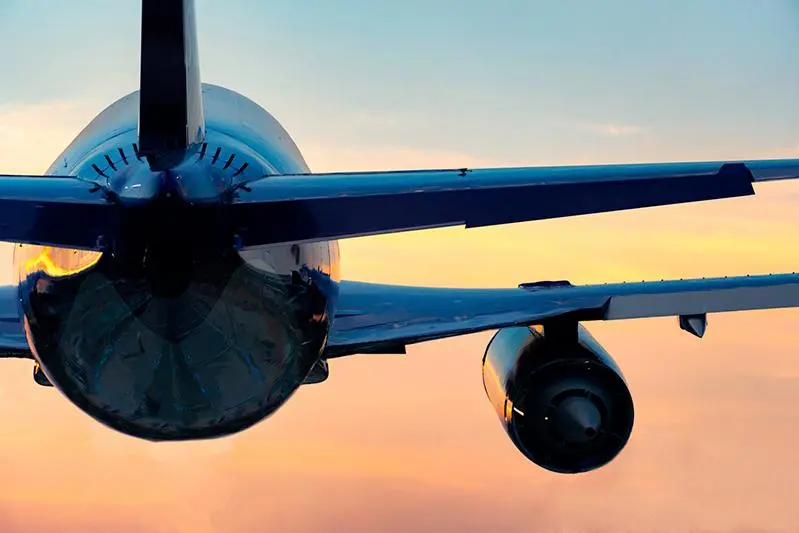PHOTO
Muscat: Middle Eastern airlines posted a 79.4 per cent demand drop in June compared to June 2019, with capacity declining by 65.3 per cent and load factor deteriorating by 31.1 percentage points to 45.3 per cent, according to the latest data from IATA.
The International Air Transport Association (IATA) said that Asia-Pacific airlines’ June international traffic fell 94.6 per cent compared to June 2019, unchanged from the 94.5 per cent decline in May 2021 versus May 2019.
“The region had the steepest traffic declines for an eleventh consecutive month. Capacity dropped 86.7 per cent and the load factor was down 48.3 percentage points to 33.1 per cent, the lowest among regions,” IATA said.
European carriers saw their June international traffic declined 77.4 per cent versus June 2019, a gain from the 85.5 per cent decrease in May compared to the same month in 2019. Capacity declined 67.3 per cent and load factor fell 27.1 percentage points to 60.7 per cent.
IATA further said that the North American carriers’ June demand fell 69.6 per cent compared to the 2019 period, improving from the 74.2 per cent decline in May versus two years ago. Capacity sank 57.3 per cent, and load factor dipped 25.3 percentage points to 62.6 per cent.
China’s domestic traffic returned to negative territory in June, declining 10.8 per cent compared to June 2019, following a 6.3 per cent growth in May versus the same period in 2019. New restrictions had been introduced following a COVID-19 outbreak in several Chinese cities.
US domestic traffic improved from a 25.4 per cent decline in May versus the same month in 2019 to a 14.9 per cent decline in June. Life in the US was starting to see some normalcy following the easing of measures and the rapid rollout of the COVID-19 vaccination, IATA said.
The bottom line
“With each passing day, the hope of seeing a significant revival in international traffic during the Northern Hemisphere summer grows fainter. Many governments are not following the data or the science to restore the basic freedom of movement,” said Willie Walsh, IATA’s Director-General.
“Despite growing numbers of vaccinated people and improved testing capacity we are very close to losing another peak summer season on the important trans-Atlantic market. And the UK’s flip-flop to reinstate quarantine for vaccinated arrivals from France is the kind of policy development that destroys consumer confidence when it is most needed,” he added.
“A risk-managed reconnecting of the world is what we need. Vaccinated travellers should have their freedom of movement returned. An efficient testing regime can sufficiently manage risks for those unable to be vaccinated. This is the underlying message in the latest WHO travel guidance. Some governments are moving in this direction,” Walsh said.
“The UK, Singapore and Canada have indicated timelines to open their borders without quarantine for vaccinated travellers. The European Commission has recommended that its member states adopt travel protocols that are closely aligned with the WHO — including testing for unvaccinated travellers. Similar moves to re-open borders in line with the WHO guidance by the US — leaders in vaccinating their populations — would give critical impetus to demonstrating that we can live and travel while managing the risks of COVID-19,” he further added.
The IATA passenger demand performance for June 2021 showed a very slight improvement in both international and domestic air travel markets. Demand remains significantly below pre-COVID-19 levels owing to international travel restrictions.
As comparisons between 2021 and 2020 monthly results are distorted by the extraordinary impact of COVID-19, unless otherwise noted, all comparisons are to June 2019, which followed a normal demand pattern.
International passenger demand in June was 80.9 per cent below June 2019, an improvement from the 85.4 per cent decline recorded in May 2021 versus two years ago. All regions except Asia-Pacific contributed to the slightly higher demand.
Total domestic demand was down 22.4 per cent versus pre-crisis levels (June 2019), a slight gain over the 23.7 per cent decline recorded in May 2021 versus the 2019 period. The performance across key domestic markets was mixed with Russia reporting robust expansion while China returned to negative territory.
“We are seeing movement in the right direction, particularly in some key domestic markets. But the situation for international travel is nowhere near where we need to be. June should be the start of peak season, but airlines were carrying just 20 per cent of 2019 levels. That’s not a recovery, it’s a continuing crisis caused by government inaction,” said Walsh.
© Muscat Media Group Provided by SyndiGate Media Inc. (Syndigate.info).












